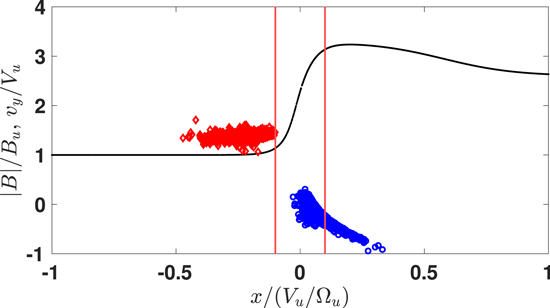For single-point measurements of quasi-perpendicular shocks, analytical measurements of the foot width are often used to evaluate the velocity of the shock relative to the satellite. This velocity is of crucial importance for in situ observations because it enables the identification of the spatial scale of other regions of the shock front such as a magnetic ramp for which the comprehensive understanding of their formation is not yet achieved. Knowledge of the spatial scale is one of the key parameters for the validation of theoretical models that are developed to explain the formation of these regions. Previously available estimates of the foot width for a quasi-perpendicular shock are based on several simplifications such as zero upstream ion temperature and specular ion reflection by the cross-shock electrostatic potential. The occurrence of specular reflection implies high values of the cross-shock electrostatic potential that significantly exceed the values obtained from in situ measurements. In this paper the effects of nonzero ion temperature and nonspecular ion reflection on the foot width are investigated. It is shown that in the case of nonspecular reflection the foot width can be as small as half of the size of the standard widely used estimate. Results presented here enable more reliable identification of the shock velocity from single-point observations.

Full article:
Balikhin, M. and Gedalin, M. (SHARP) (2022). Collisionless Shocks in the Heliosphere: Foot Width Revisited. The Astrophysical Journal, 925, doi: 10.3847/1538-4357/ac3bb3
License: CC BY 4.0





